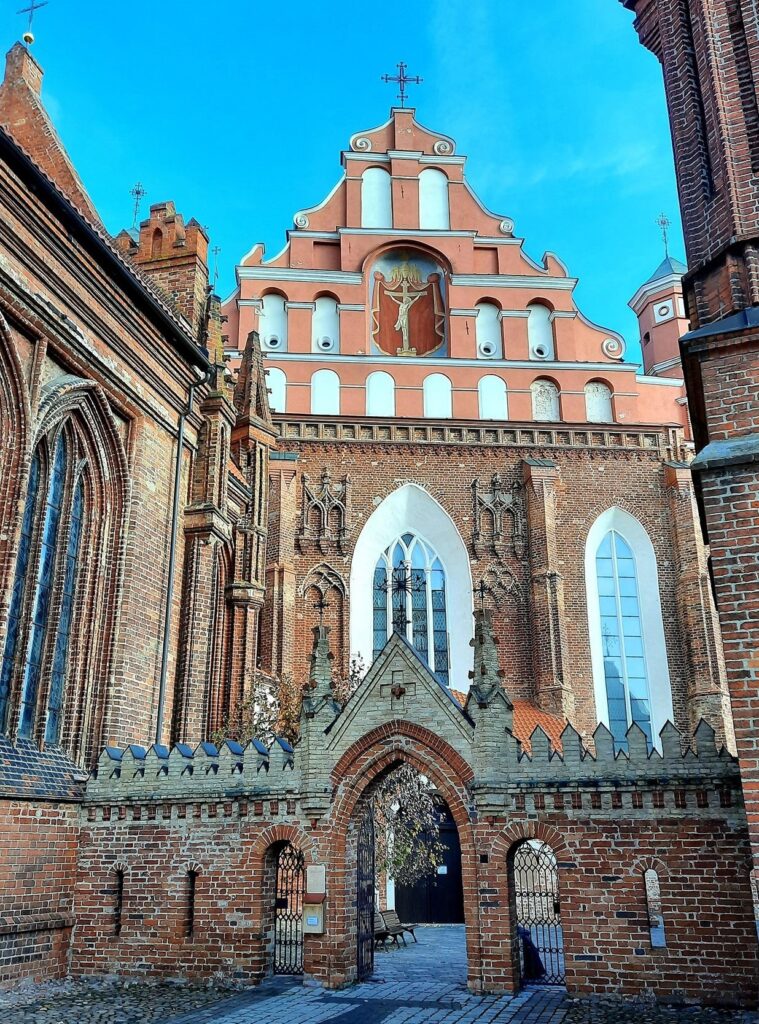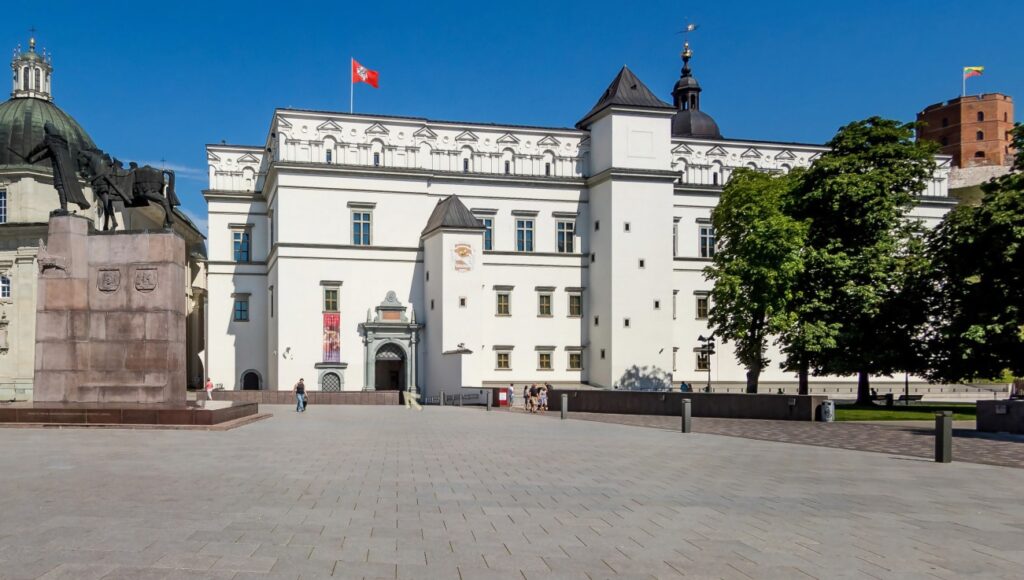Bernardine Church in Vilnius
Introduction

The Bernardine Church (Maironio St.10) is one of the largest Gothic sacral buildings in Vilnius. It acquired some features of Renaissance and Baroque in the 17th-18th century. Being much larger than the church of St.Anne, it forms an interesting and unique ensemble with the latter.
Bernardine monks built a wooden church in the 2th half of the 15th century, and at the end of the same century – a brick one. It was renewed many times. In the times of the Soviet occupation it was closed down and handed over to the Art Institute. In 1994, the brethren of St. Francis returned to the church, and presently it is under restoration.
Bernardine Church Architecture

The whole ensemble was created in the middle of the 18th century. It is the oldest brick building of the entire complex. Gothic forms have survived quite well on the south wall of the cloister. Gothic pointed-arch windows and buttresses stand out on the facade. Above them rises a pediment with twin octagonal towers on the sides and a fresco depicting the Crucifix in the middle niche. A Gothic presbytery is the oldest part of the church. An important accent of the exterior is a slender but not very tall octagonal tower of the belfry echoed by twin also octagonal towers on the facade. Geometrical brick ornaments add to its decorativeness.
A sacristy of the Bernardine Church with remarkable rib-and-panel vaults was also erected. A sumptuous 15th century wrought metal door and fragments of 16th century mural paintings. Corridors and other premises are covered in rib or cross vaults.
Interior Of Bernardine Church
However, the most valuable part is the church interior. 8 high pillars divide it into 3 naves; in the lateral naves Gothic rib-and-panel and ribbed vaults have survived. The narthex also has rib-and-panel vaults. The walls of the naves are decorated with Gothic polychrome frescoes, colour figural compositions on biblical themes, floral ornaments, heraldic insignia. These mural paintings are considered unique in the world. Their composition and type of presentation of the subject matter belongs to Renaissance, and the stylistics – to the Gothic style. Fragments of the paintings, serve to show the history of both the church and its decorative elements, and the complexity of the latter.
11 altars of the central nave constitute a beautiful ensemble. All the altars are made of wood, late Baroque, of natural colour. There is also a pulpit of similar forms and sculptural decor.
More About Bernardine Church

The church holds the oldest known sculpture of the Crucifix in Lithuania (15th century) of a high artistic quality. Particularly valuable are two marble tombstones: a Renaissance one for Stanislaus Radziwill in the north nave and a Baroque one for Piotr Wiesiolwski in the south nave (1634).
Since its founding, a novitiate and seminary operated at the monastery, a rich library had been accumulated. There were craftsmen, artists and organists among the monks. The monastery won the greatest fame for preachers who attracted large audiences. The monastery was closed in 1864, and the building housed soldiers’ barracks. In 1919 it was given to the art faculty of the university, later – to the Art Institute.
South of the ensemble of St.Anne and Bernardine Churches, a monument to Adam Mickiewicz was erected. On this site the first patriotic meeting that gave rise to the Independence Movement took place in 1987. Between the Gothic ensemble and Vilnia, a sizeable area is occupied by an old Bernardine Garden, above which loom the hills of Bekesh and Three Crosses.




